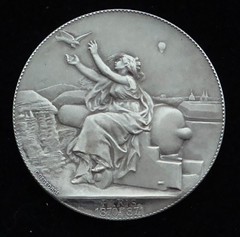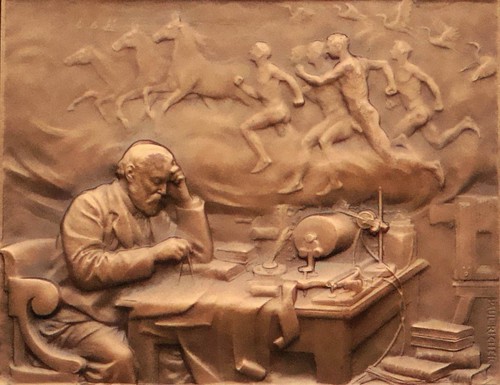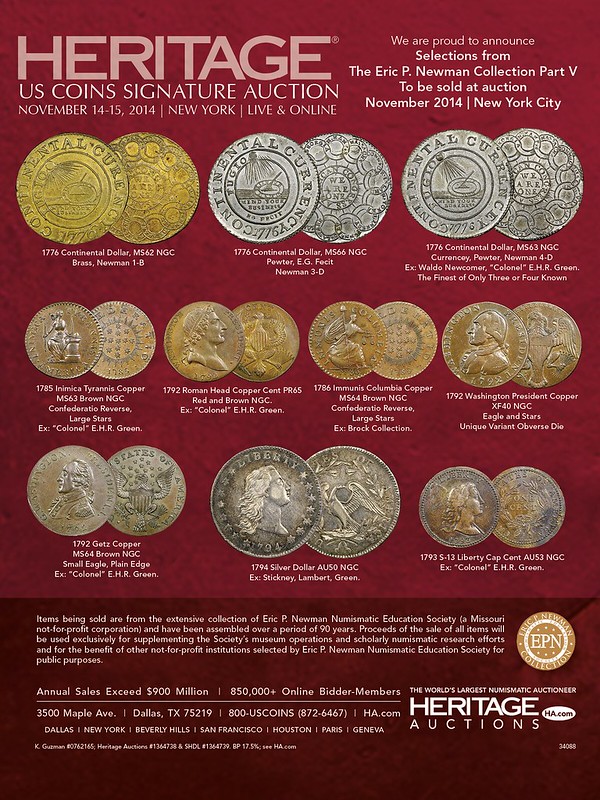
PREV ARTICLE
NEXT ARTICLE
FULL ISSUE
PREV FULL ISSUE
THE FRENCH NARRATIVE MEDAL
In my numismatic diary last week I mentioned a great presentation I saw at the American Numismatic Association convention. E-Sylum reader Tom Garver, an art historian and retired art museum director, spoke to the Medal Collectors of America about The French Narrative Medal. A version of his paper is expected to appear in the pages of the MCA Advisory. But with the help of David Menchell I got in touch with Tom and he kindly provided copies of his material so I could include a few things in The E-Sylum. Thanks!
-Editor
From the beginning of the 15th century, artists had worked to perfect the rendering of three dimensional space on a two dimensional picture plane through the creation of what’s known as the single vanishing point perspective. By the later 19th century, more than 400 years later, this technique had been absolutely refined and polished. Space was also created with overlapping forms, and “atmospheric perspective” used shapes growing softer and less distinct to suggest distance. In medalic art movement and depth might be also be indicated by figures or objects partially covering the elegantly lettered text or even falling out of the frame. The academic artists of this time were not interested in challenging the well-known visual modes, but rather used them to create and extend the whole idea of “the story, ”that is narrative and visual drama. Frequently this meant making manifest and visual the invisible ideas and concepts which underlay what was visible to the rest of us.

YOUNG MAN FILING Alexandre Charpentier, Ca. 1900 The piece you see before you is a simple image of a young man filing something, created by Alexandre Charpentier about 1900. It demonstrates some of the important qualities of the narrative medal which I hope to make clearer today.

“PARIS RECEIVING AN AERIAL COMMUNICATION,” CA. 1880 Charles Jean Marie Degeorge (French, 1837-1888) The female allegory of Paris, marked by the crown she wears, receives a pigeon from the outside, while a balloon floats over the Prussian lines with more pigeons. The city itself is identified by the Arc de Triomphe and the dome of the pantheon. Here is the story, visually fixed at a time and place, in a way not found in earlier medals, a little story told in the palm of your hand. And with the departure of the monarchy and the expansion of the middle class, the narrative medal really comes into its own. Science and medicine, business and commerce, agriculture and sports were all subjects of the narrative medalists art. Additionally, there is a new drama found in medalic art which drew strongly on the other arts, painting, sculpture, architecture and music of this romantic era.

ETIENNE JULES MAREY (1830-1904) Paul Richer (French, 1849-1933) Etienne Jules Marey was a true polymath. he died in 1904, having developed the first blood pressure machine, performed early pre-motion picture stop-motion photo studies of human and animal articulation and created ways of documenting other evanescent events, previously thought of as “unrecordable.” Richer has created a remarkable portrait of the man, his equipment and his achievements of documentation, all in one image. The epigram here says it precisely: the traces of graphically recorded motion live by your art.

Wayne Homren, Editor The Numismatic Bibliomania Society is a non-profit organization promoting numismatic literature. See our web site at coinbooks.org. To submit items for publication in The E-Sylum, write to the Editor at this address: whomren@gmail.com To subscribe go to: https://my.binhost.com/lists/listinfo/esylum All Rights Reserved. NBS Home Page Contact the NBS webmaster 
|